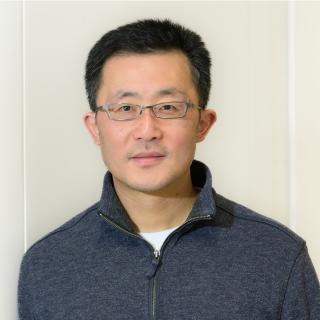
Acong Yang, Ph.D.
- Center for Cancer Research
- National Cancer Institute
- Building 560, Room 11-6
- Frederick, MD 21702-1201
- 301-846-7697
- acong.yang@nih.gov
RESEARCH SUMMARY
Dr. Acong Yang studies the mechanism of microRNA targeting, microRNA turnover and microRNA functions in cancer. She contributed to the discovery of a new microRNA-targeting mechanism, tail-U-mediated repression (TUMR), to the RNA field. Using biochemical approaches and next generation sequencing analysis, Dr. Yang found that uridylation can modulate pairing between microRNA and mRNA, enabling 3'-uridylated isomiRs to recognize and repress a distinct set of non-canonical targets.
Areas of Expertise

Acong Yang, Ph.D.
Research
My research explores the function of miRNA 3' modifications (such as non-templated nucleotide addition or tailing) on miRNA targeting and decay, as well as their underlying mechanisms. Terminal nucleotidyl transferases (TENTs) generate 3' miRNA isomiRs by posttranscriptional 3' uridylation and/or adenylation. Recently, I discovered that uridylation can alter the way in which miRNA recognizes its targets; this is called tail-U-mediated repression (TUMR). I plan to further characterize the nature of miRNA-TUMR target interactions to better understand the underlying mechanisms and determine the extent to which the TUMR mechanism contributes to cancer development.
I am also interested in studying how 3’ tailing impacts miRNA stability. I found that Ago-bound mature miRNAs are uridylated and subsequently degraded by DIS3L2 when their 3' end is dislocated from the Ago PAZ domain. Once the 3' end is available, tailing licenses mature miRNA for degradation by 3' to 5' exonucleases, such as DIS3L2, suggesting a role for 3' tailing in the regulation of miRNA stability. I plan to extend this study to explore the role of tailing in the control of miRNA turnover.
Publications
- Bibliography Link
- View Dr. Yang's ORCID Bibliography.
AGO-bound mature miRNAs are oligouridylated by TUTs and subsequently degraded by DIS3L2
Uridylation Confers miRNAs with Non-canonical Target Repertoires
Structural Differences between Pri-miRNA Paralogs Promote Alternative Drosha Cleavage and Expand Target Repertoires
Nucleolin maintains embryonic stem cell self-renewal by suppression of p53 protein-dependent pathway
Calcineurin-NFAT signaling critically regulates early lineage specification in mouse embryonic stem cells and embryos
Biography

Acong Yang, Ph.D.
Dr. Acong Yang obtained her Ph.D. from Shanghai Jiao Tong University School of Medicine in 2009. She then joined Dr. Ying Jin's lab, Department of Development, Shanghai Jiao Tong University School of Medicine as a Postdoctoral Fellow from 2009 to 2011. In 2011, she came to the United States and joined Dr. Michael Kuehn’s lab in the Laboratory of Protein Dynamics and Signaling at NCI as a Visiting Fellow. In 2014,she joined Dr. Shuo Gu’s lab in the RNA Biology Laboratory to continue her postdoctoral training. From 2016 to 2020, she was appointed as a Research Fellow. She is currently a Staff Scientist in Dr. Gu’s laboratory.
Dr. Yang has received a number of awards, including the NIH Employee Recognition’s Special Act Award (2016) and the NCI Director's Innovation Award (2018). In 2020, Dr. Yang received an $8,000 award for NCI Cancer Genomics Cloud (CGC) Collaborative Project Support.
